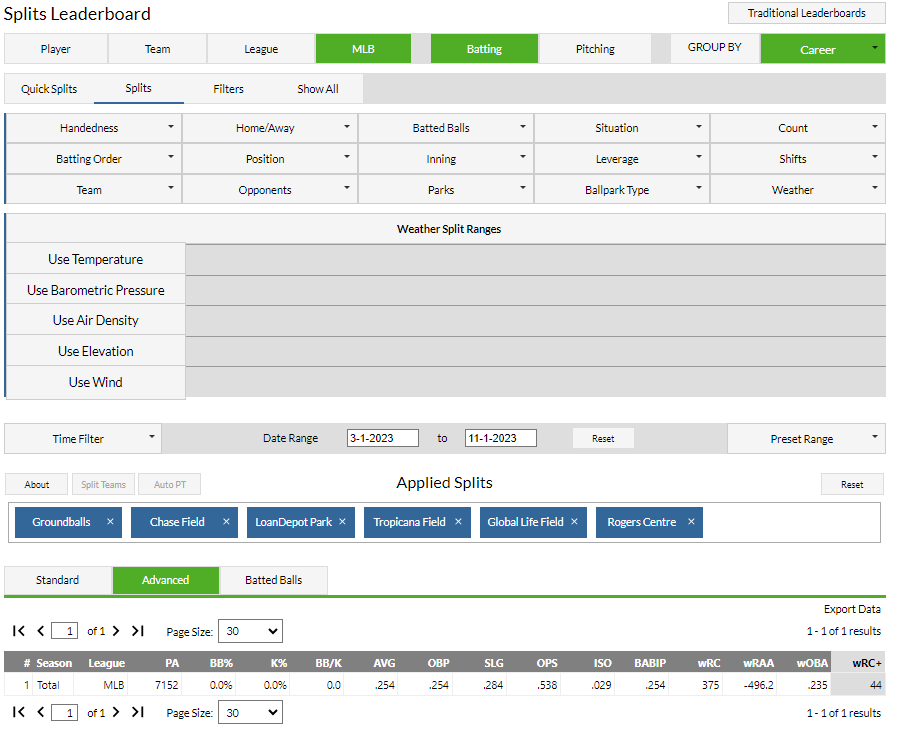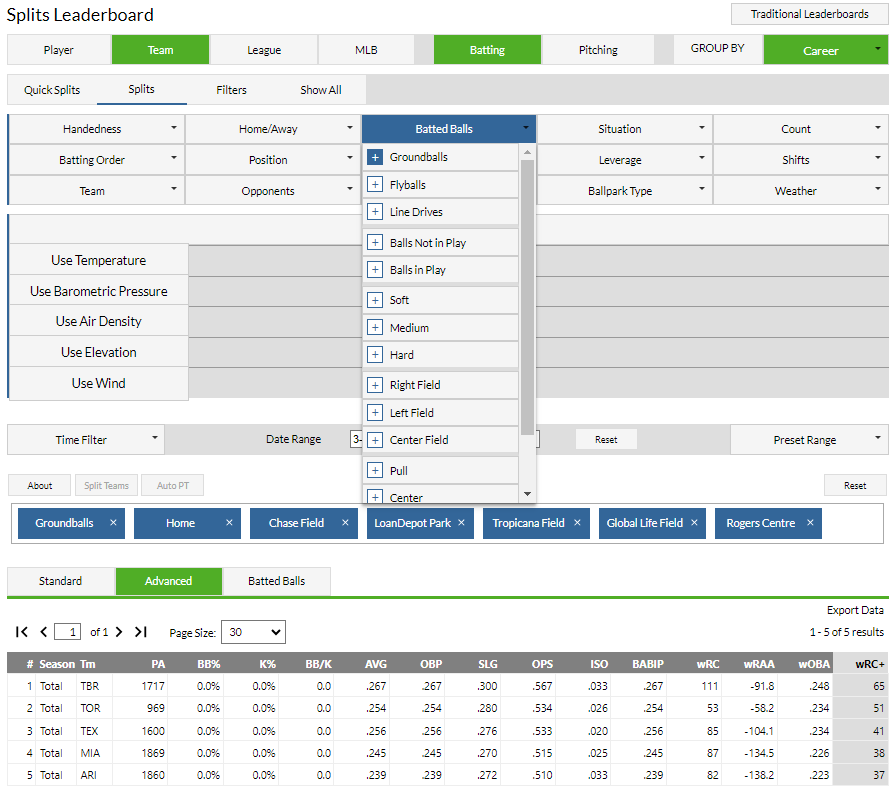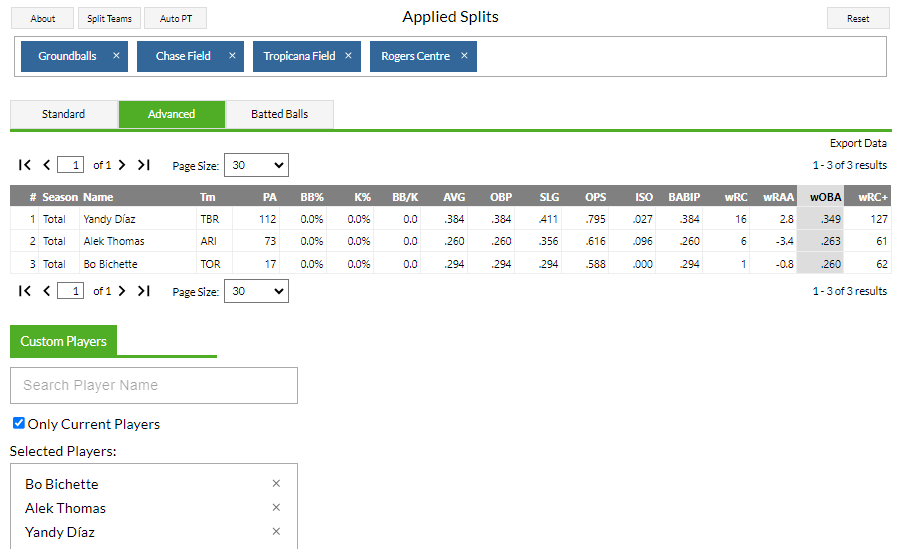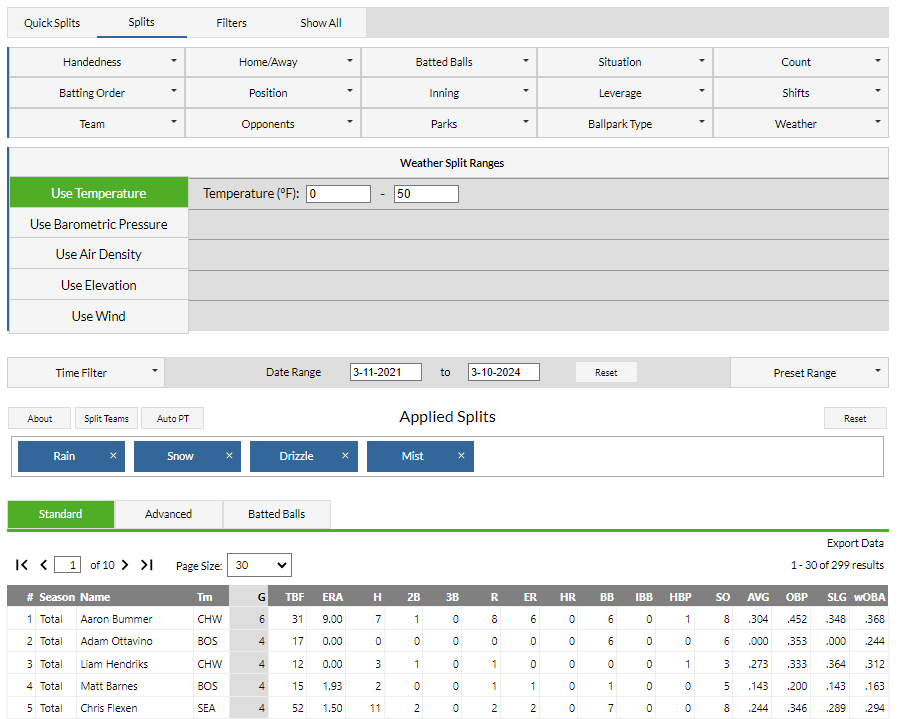FanGraphs Spotlight: Know Your Environment With Stadium and Weather Splits
The FanGraphs split tool is so powerful that its functions have to be… (rubs hands together)… (waits for applause)… split into multiple spotlight posts. I’ll admit right away that the feature I’m about to highlight is a little bit out there. I don’t use it every day, or even every week. But it allowed me to research what ended up being my favorite data-driven article that I’ve written in my time at this company.
The post in question, from last January, is titled “Yandy Díaz, Artificial Turf, and Earl [Expletive] Weaver.” As you can guess from the headline, it was born from a desire to talk about my favorite manager in baseball history, and his rhetorical gift for dense and florid obscenity. In order to get there, I had to dig around looking for hitters like Díaz: big, strong guys who hit the ball hard enough to put it over the fence, but who suffered from high groundball rates.
After some clicking and sorting, I was tickled to discover that there were a lot of Rays and Blue Jays at the top of the leaderboard. The Rays and Blue Jays — in addition to playing in the same division and having rhyming names — both play on artificial turf. Only five teams in the league do. Could they be targeting groundball hitters on purpose, on the pretense that fake grass is friendlier to such hitters than the real stuff? (I didn’t know it at the time, but the Marlins and Diamondbacks would make surprise runs to the playoffs in 2023 after finishing first and fourth in groundball rate. Both teams play on turf.)
Actually investigating that premise — that groundball hitters fare better on turf — required refining the whole set of offensive data down by batted ball type. Then again by stadium. There’s no split tool for grass vs. turf, nor for the two different brands of artificial turf. So that involved filtering for the stats at the five ballparks in question and consolidating them. Surely no tool can slice the apple that thin.

Poppycock. The splits tool did it with ease. By changing the filter from MLB to team-by-team, I then could split these groundball stats out into each individual team’s home ballpark. You could even change the date parameters to expand the sample to two seasons instead of one, or look at away teams’ stats in those environments.

And from there, the possibilities are… maybe not literally endless, but close enough you’d never be able to tell. These stats are available on a player-by-player basis, either as a leaguewide leaderboard or narrowed to one or a few specific hitters of interest via the Custom Players function.

Now, all of the parks with artificial turf are indoors, which makes splits by weather irrelevant. But that’s available too. Not too long before I wrote the groundballs-on-turf article, I was in the auxiliary press box in Philadelphia, watching Seranthony Domínguez trying and failing to grip his changeup in driving rain and freezing cold conditions in Game 5 of the NLCS. Surely it must be difficult to pitch in the cold and the wet.
Good news: We can tell exactly how difficult by filtering for temperature and precipitation.

Temperature is just the tip of the proverbial iceberg: The splits tool also supports searches by custom range for elevation, wind speed, barometric pressure, and air density. I didn’t even know “air density” was something you could measure. Either way, there’s no need to use the time of year as a proxy for atmospheric conditions. The dog days of summer aren’t the same in Atlanta as they are in Boston, after all, so the splits tool allows you to be more precise.
These splits are useful both for rigorous empirical study — determining the effects of ballpark construction or weather on offensive environment — and for trivia — “leading the league in RBI when the temperature is over 80 degrees and the wind is blowing at least 10 mph,” or something equally esoteric and frivolous. That’s both sides of the coin for the numerically literate sports fan.






